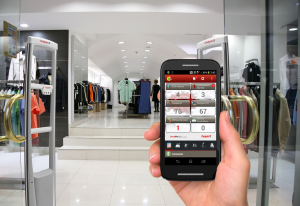 It seems like the months of November and December are just ripe for criminal activity in our stores. These are the months that we see a spike in not only internal and external, but other, more serious crimes like burglary, armed robberies, car theft, and purse snatchings. Over the last decade, I’ve put together some holiday safety tips for my stores and I’d like to also share them with you.
It seems like the months of November and December are just ripe for criminal activity in our stores. These are the months that we see a spike in not only internal and external, but other, more serious crimes like burglary, armed robberies, car theft, and purse snatchings. Over the last decade, I’ve put together some holiday safety tips for my stores and I’d like to also share them with you.
One of the most common crimes that occur in our parking lots during the holiday season are vehicle burglaries. Busy shoppers are running from store to store and packing their cars full of goodies. Valuables left in plain sight attract criminals like a moth to a flame. What’s worse is that with all the hustle and bustle, often times, shoppers inadvertently leave their car doors unlocked. This one is simple to solve. First, leave all valuables and gifts in your trunk, out of sight. Second, LOCK your doors. I once partnered with local law enforcement in a store I had significant issues in and printed up some small reminders. We gave these out to every customer during checkout all season long. The customer’s appreciated the tips and we saw a reduction in parking lot incidents.
Another common theft for criminals this time of year is stealing from your customers while they shop. A busy mom sets her purse, or cell phone on the top of her buggy. In a split-second, she turns around to wrangle the kids, or to grab a hot deal. When she turns back, her purse or phone is gone. I’ve seen this happen so many times, and each time it could simply be prevented. Don’t leave your personal belongings out of sight, ever. I make it a point when I’m walking my stores, or even when I’m out shopping, to educate people on how to best protect their belongings. The last thing someone needs is to have their purse full of their hard earned money stolen right before Christmas.
We can talk about customer safety all day long, but what about your teams? We all have an obligation to keep them safe as well. Our early morning and closing teams are usually the most vulnerable. Remember that there is safety in numbers. When closing, it’s best that the entire team leave at once, with the manager, as opposed to allowing them to leave individually. This will help reduce the risk of personal crimes late at night, in addition to an after-hours robbery. The same should go with your opening team. Once the manager arrives, all employees should then get out of their vehicles, instead of waiting outside the doors. Closing and opening managers should also make it a point to drive around the perimeter of the store to look for signs of forced entry and any suspicious persons and/or activity.
Armed robbery. I dread this time of year because for my stores, every robbery we’ve ever had occurred during this time of the year. We’ve had a handful of robberies during business hours and about the same number after-hours. While it’s very hard to prevent a robbery, there are a few steps you can train your team to do in order to get out alive and unharmed. Thankfully, we’ve never had an injury as our teams followed the steps below each time. I’ll close out my holiday safety tips with these quick tips on how to stay safe during a robbery.
- Stay calm.
- Comply with all demands
- Give them whatever they want, as quickly as possible
- Get them out of the store as quickly as possible
- Do not call the police with the gunman still in the store. If police arrive quickly, there could be a shoot-out, or a potential hostage situation
- Try to remember as much descriptive information as possible (hair color, race, eye color, tattoos)
- Do not touch anything after a robbery. You don’t want to contaminate the crime scene, as police may be able to obtain DNA or fingerprints from the safe, doors, or countertops








